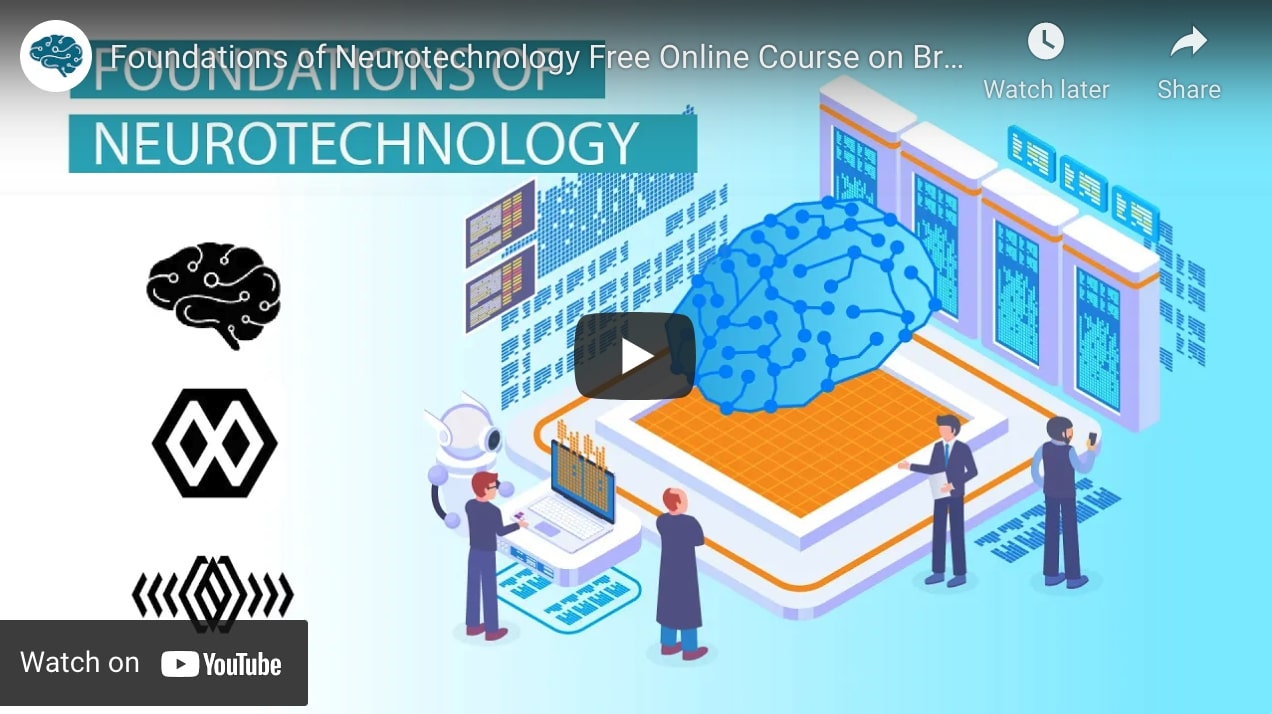
NeurotechJP has introduced various neurotech products and resources through interviews. As mentioned in an Interview article with Morgan Hough, he states the importance of open-source software and its importance as the field of neurotech continues to grow and develop. This article highlights five key resources, free and open to anyone on the internet, to start learning about neurotech and Brain Computer Interfaces.
1. BCI Guys
The BCI Guys have developed an introductory video series called the Foundations of Neurotechnology. The course covers an extensive breadth of information necessary to understand the interdisciplinary field of neurotechnology and BCIs. By taking a look at the course list, the BCI Guys provide an exceptional overview into everything BCI. The course covers the following topics: introduction and history of neurotechnology, basic neuroanatomy, brain function and neuroscience, types of neurotechnology, and neuroscience. Neurotechnology types, neuromodulation and brain function enhancement, BCI and methods, neuroethics and cultural considerations, and industry players.
NeurotechJP previously interviewed Harrison Canning, the head of the BCI Guys. They are planning to work with corporate sponsors to develop videos on the implenetation of said technologies and methods.
2. NeurotechX
NeurotechX is an international community for neurotech enthusiasts. The three pillars of NeurotechX are (1) community, (2) education, and (3) professional development. The community has developed and gathered many BCI-related resources, available for anyone to access on the internet. Among the vast library of neurotech resources they provide, the most notable is NeurotechEDU, a high level overview of developing Brain Computer Interfaces. They also provide sample projects using EEG (electroencephalography) to help you build real Brain Computer Interfaces.
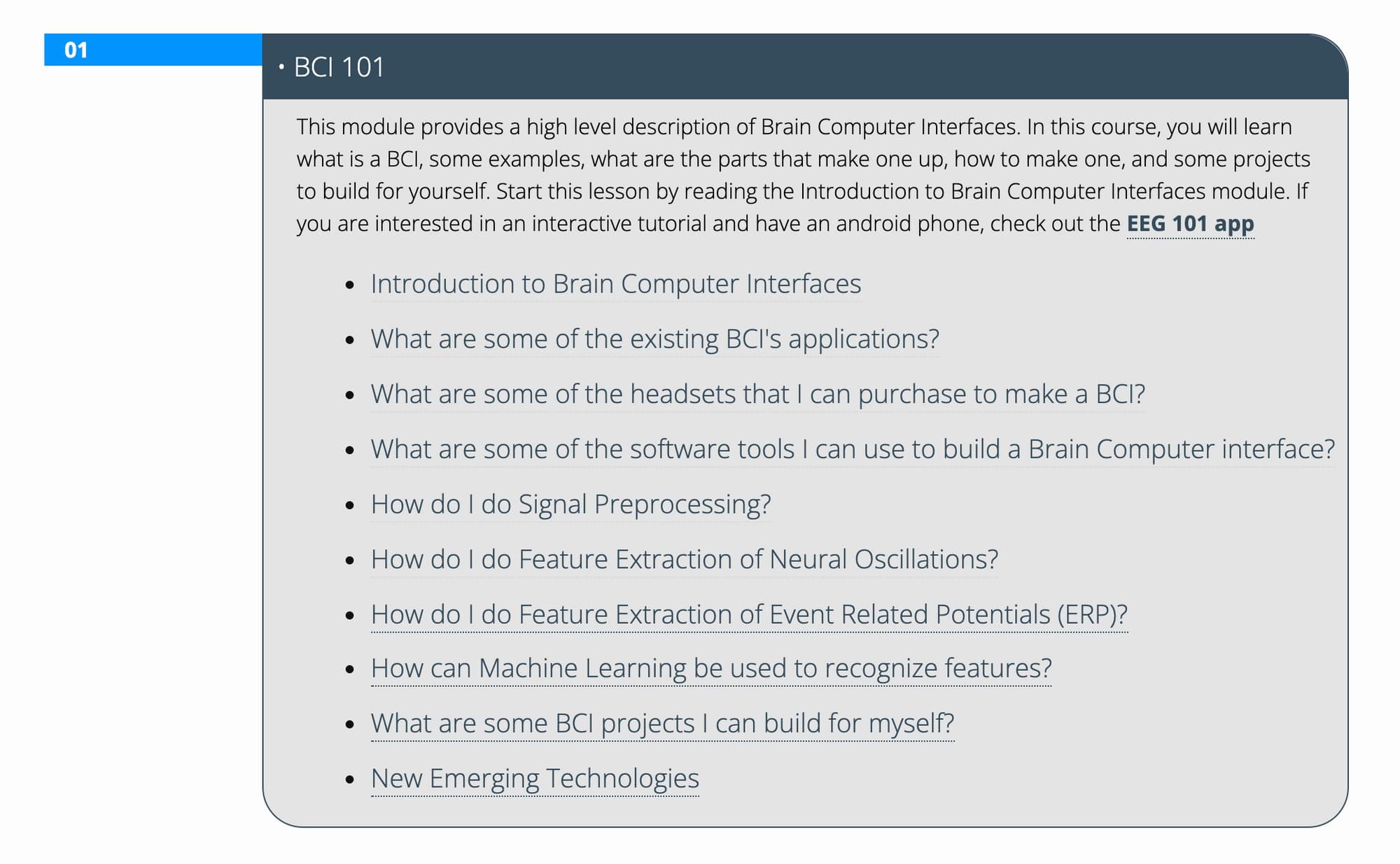 NeurotechEDU Table of Contents
NeurotechEDU Table of Contents
In addition, the EEG notebook in the NeurotechX Github repo is a very good resource. It is a very comprehensive resource and contains sample code for almost all EEG-related experiments, such as P300, SSVEP, and so on.
3. Neurotech Berkeley
Neurotech Berkeley is an organization run by members of the University of California Berkeley, where Carmena Lab is located, as previously mentioned in 5 Featured University Labs/Facilities in BCI. The organization is divided into six divisions: software, devices, consulting, outreach, publication, and education, with a focus on EEG, TMS, and fMRI.
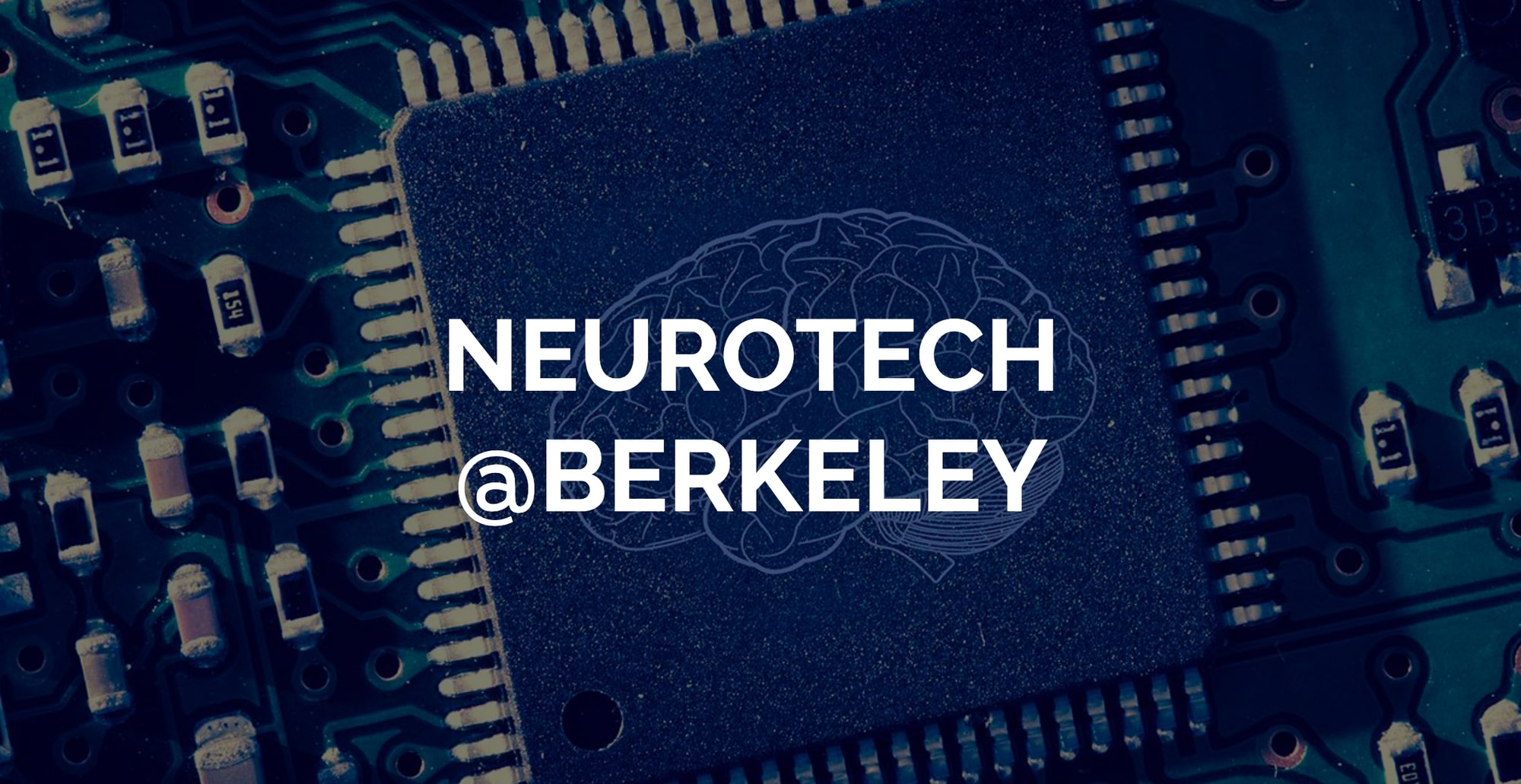
Neurotech Berkeley's Github provides many Neurotech lessons and projects, with Neurotech-Course being an introductory neurotechnology course complete with slides, videos, and tutorials. Some key resources include tutorials on signal processing and data analysis in Jupyter notebooks, fMRI and EEG analysis (python), and the fMRI Collaboratory. This is a great resource for those who are interested in using EEG, TMS, and fMRI in their research.
4. Spring school by G.tec
g.tec medical engineering has been developing and manufacturing high-performance BCI and neurotechnology for both invasive and non-invasive recording for research and clinical use since 1999. g.tec offers SPRING SCHOOL, a 10-day online educational program that provides 10 hours of daily instruction using g.tec products. In fact, the seminar originally cost 980 EURO (about 120,000 yen), but it was offered for free by Corona Peripherals 2021. Recordings are available on Youtube.
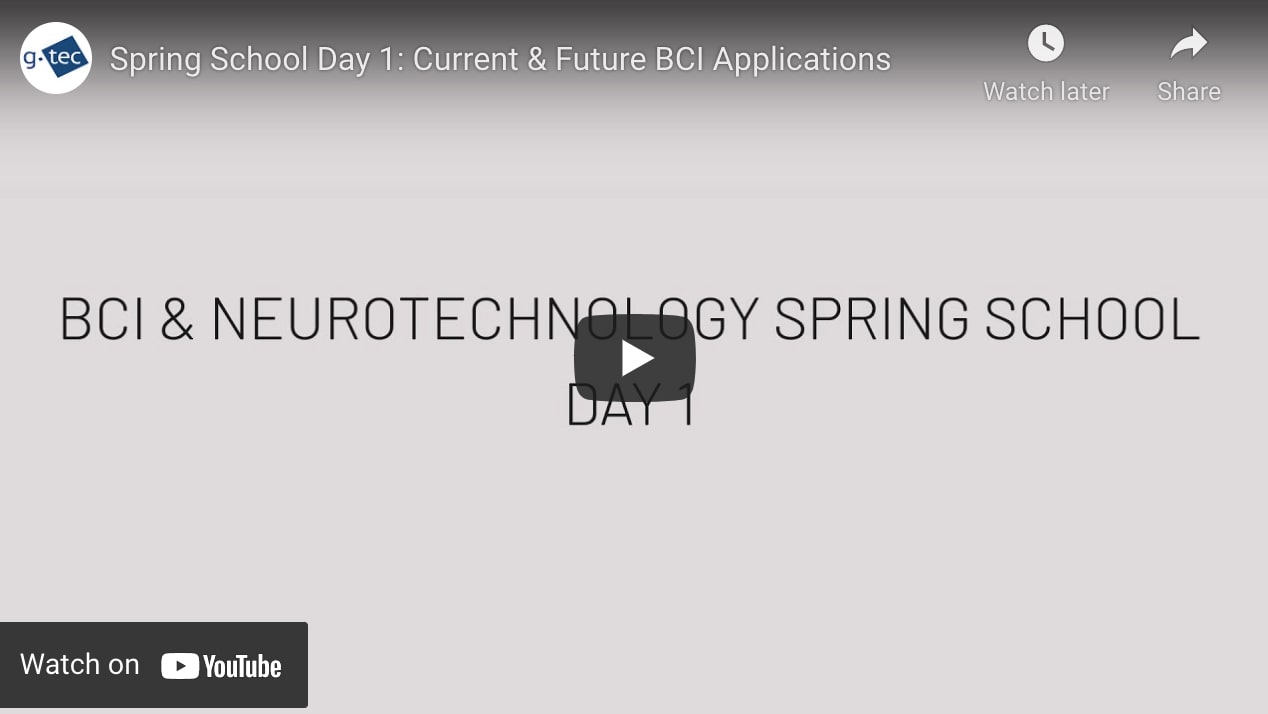 Youtube: Spring School Day 1 by G.tec
Youtube: Spring School Day 1 by G.tec
In addition, g.tec hosts BR41N.IO(stands for THE BRAIN-COMPUTER INTERFACE DESIGNERS HACKATHON), a hackathon that started in 2017, and webinars every Monday. SPRING SCHOOL 2022 will also be held virtually starting April 30, Vienna time.
5. Neuromatch
Neuromatch is an online community run by an American non-profit organization. It operates two organizations, Neuromatch Academy and Neuromatch Conference, whose mission is to facilitate inclusive, global interaction for learning, mentorship, networking, and professional development.
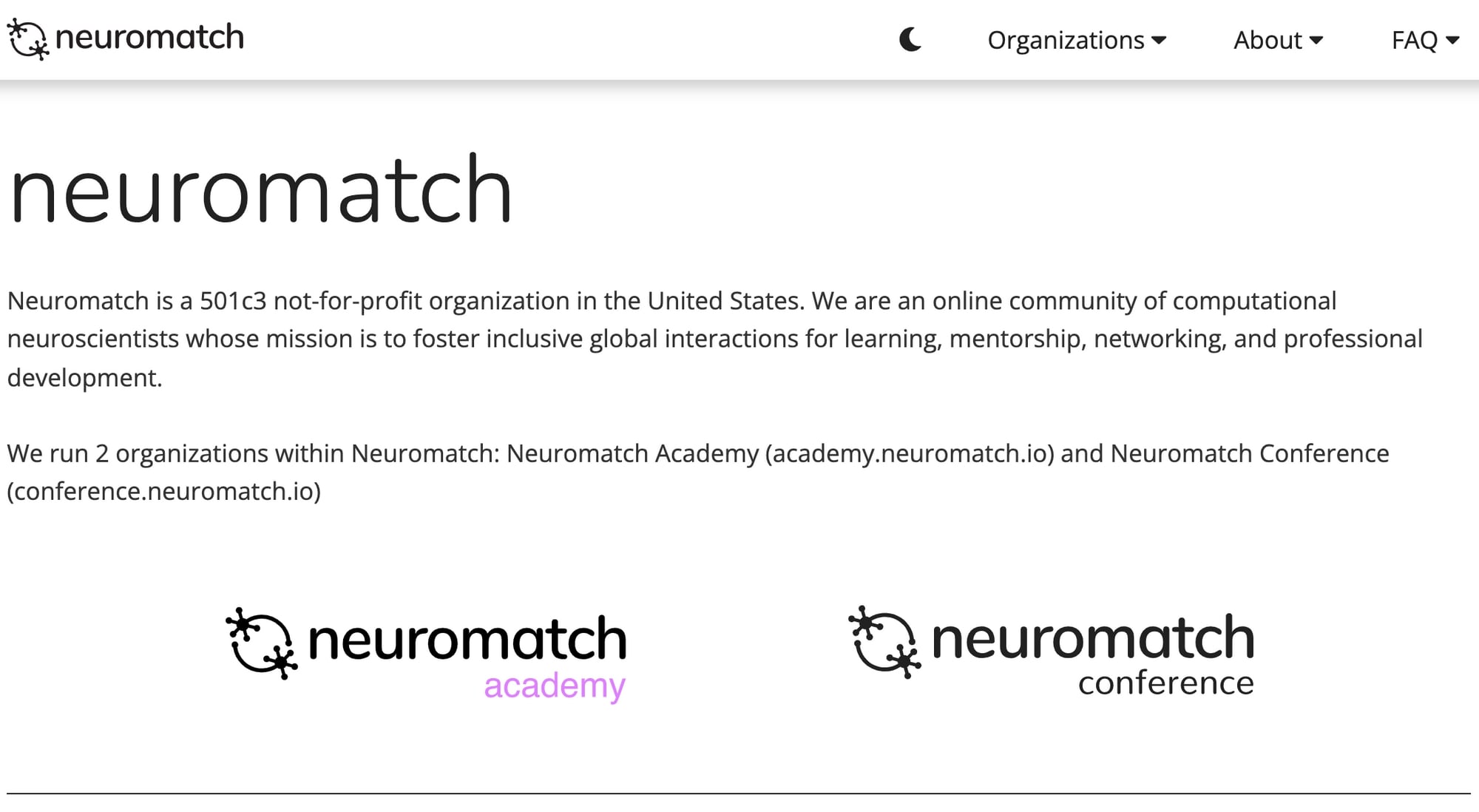 Image: Neuromatch Website
Image: Neuromatch Website
Neuromatch Academy is divided into NMA-CN(Neuromatch Computational Neuroscience) for computational neuroscience and NMA-DL(Neuromatch Deep Learning) for deep learning. The syllabus for each is available on Github. Both courses are organized into a 15-day Summer School curriculum, where you are encouraged to learn and collaborate with people from all over the world.
The Neuromatch Conference is a conference for the computational neuroscience community. Looking at the agenda, the conference is divided into keynotes, panel sessions, short talks, and flash talks, which can be viewed through Cloudcast. There is also a Discord server where you can ask questions and discuss.
In conclusion
In addition to the contents introduced here, the Python library MNE has in-depth tutorials for analyzing brain waves, and OpenBCI, which is a sponsor of NeurotechX, provides great tutorials on how to use OpenBCI. There is no doubt that the development of this industry is propelled by open-source culture.
One final point to note is that unfortunately, when handling open-source brain data, ethical issues arise given the senstive and personal nature of brain activity. For those looking to learn about Neurotech and BCIs, open-source resources and datasets are extremely valuable and should be used while keeping ELSI (Ethical, Legal, and Social Issues) in mind.
